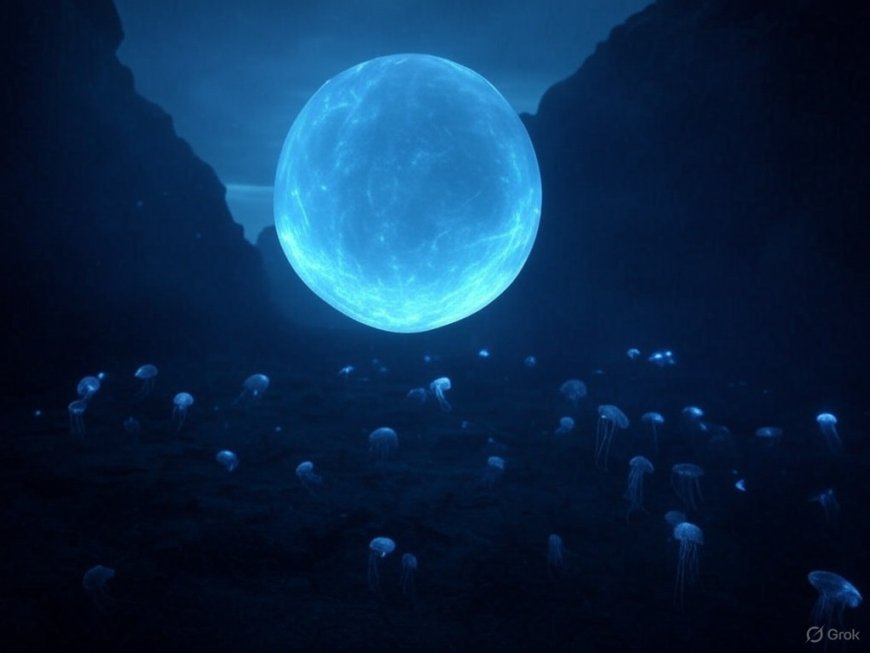The Bloop Sound: A Deep-Sea Mystery That Baffled Scientists for Years
What was The Bloop? Discover the deep-sea mystery that puzzled scientists for years and its shocking true origin.

Introduction
The ocean is one of the least explored frontiers on Earth, holding countless mysteries beneath its depths. One such mystery, known as The Bloop, puzzled scientists for years. First detected in 1997, this deep-sea sound was so powerful that it could be heard over 5,000 kilometers (3,100 miles) away. It led to wild speculation—was it an unknown marine creature, a secret military experiment, or something even more mysterious?
For years, researchers struggled to explain The Bloop’s origin, fueling theories of massive sea monsters, undiscovered ecosystems, and even alien activity. But what was the true source of this sound? And how did scientists finally unravel the mystery?
The Discovery of The Bloop
When and Where Was It Heard?
In 1997, the U.S. National Oceanic and Atmospheric Administration (NOAA) picked up an ultra-low-frequency sound from deep within the Pacific Ocean. It was recorded using an array of hydrophones (underwater microphones) originally designed to detect Soviet submarines during the Cold War.
- The sound was detected multiple times over the summer.
- It originated from somewhere around 50°S, 100°W—a remote location in the South Pacific, not far from the coast of Chile.
- It lasted for about one minute and had an extremely powerful range, far louder than any known marine animal.
Why Was It So Puzzling?
What made The Bloop particularly strange was its frequency pattern. Most known underwater sounds from geological events, like earthquakes or volcanic activity, have a distinctive signature. But The Bloop’s frequency profile closely resembled biological sounds—meaning it had characteristics similar to noises made by living creatures.
This led scientists to ask a mind-bending question: Could The Bloop have come from an unknown deep-sea creature larger than any whale?
Theories Behind The Bloop
As the scientific community and the public tried to decode the sound, several theories emerged.
1. A Gigantic Undiscovered Sea Creature
One of the most exciting theories was that The Bloop could be the call of a massive, unidentified marine creature lurking in the depths of the ocean.
- The blue whale is the loudest known animal, but The Bloop was significantly louder.
- Some speculated that it could be a colossal squid, a new type of massive whale, or even a real-life sea monster.
- The idea of a deep-sea leviathan hiding in the hadal zone (depths beyond 6,000 meters) captured the public’s imagination.
2. Alien or Extraterrestrial Origins
Some conspiracy theorists suggested that The Bloop could be linked to extraterrestrial activity, either as signals from an unknown craft or an anomaly caused by something unnatural.
3. Underwater Military Experiments
Given that the sound was detected using Cold War-era surveillance equipment, some theorists believed that The Bloop might have been a classified military experiment—possibly related to submarine warfare, advanced sonar technology, or deep-sea weapon testing.
4. Geological Activity (Earthquakes or Icequakes)
Some scientists considered geological sources, such as underwater earthquakes, volcanic activity, or ice calving (large chunks of ice breaking off from glaciers). However, none of these perfectly matched The Bloop’s sound profile.
The True Explanation: Icequakes from Glacial Activity
After years of speculation, scientists at NOAA finally identified the likely source of The Bloop: icequakes caused by large chunks of ice breaking off Antarctic glaciers.
How Did They Reach This Conclusion?
- In the early 2000s, NOAA recorded several similar icequake sounds.
- These new sounds matched The Bloop’s low-frequency signature and powerful volume.
- Researchers compared the sound patterns and determined that The Bloop was likely the result of massive icebergs cracking and fracturing in the Southern Ocean.
This meant that The Bloop was not a sea monster, a government experiment, or an alien signal—it was simply the sound of shifting ice.
Why Was The Bloop So Loud?
The reason The Bloop was so powerful lies in the nature of sound transmission underwater.
- Water is an excellent sound conductor—sound waves travel faster and farther underwater than in air.
- Large-scale iceberg cracking can produce enormous amounts of energy, leading to sounds that can travel for thousands of kilometers.
This is why The Bloop was heard across the Pacific Ocean, despite originating near Antarctica.
Other Mysterious Ocean Sounds
While The Bloop has been solved, the ocean is still home to several unexplained sounds that continue to intrigue scientists.
1. The Julia Sound (1999)
Another mysterious deep-sea sound detected by NOAA, Julia, lasted for about 15 seconds and was powerful enough to be heard across the Pacific. Some believe it was caused by a large iceberg running aground.
2. The Upsweep Sound (1991-Present)
An unknown sound consisting of ascending tones that have been recorded every year since 1991. It remains unexplained but may be linked to volcanic activity.
3. The Slow Down Sound (1997)
Detected the same year as The Bloop, this sound gradually decreased in frequency—possibly due to ice movements.
To explore more about these mysterious underwater sounds, visit NOAA’s official website.
Final Thoughts: The Ocean’s Endless Mysteries
The story of The Bloop highlights how little we truly know about our oceans. While the mystery was eventually solved, it took years of research and advanced technology to reach a conclusion.
The deep sea remains one of Earth’s most enigmatic places—over 80% of it is still unexplored. New discoveries are being made all the time, and who knows what other sounds, creatures, or phenomena might still be waiting beneath the waves?
For further reading on deep-sea mysteries, visit National Geographic.
What's Your Reaction?
 Like
0
Like
0
 Dislike
0
Dislike
0
 Love
0
Love
0
 Funny
0
Funny
0
 Angry
0
Angry
0
 Sad
0
Sad
0
 Wow
0
Wow
0



















































